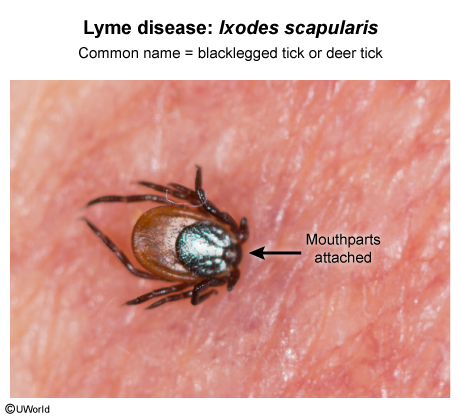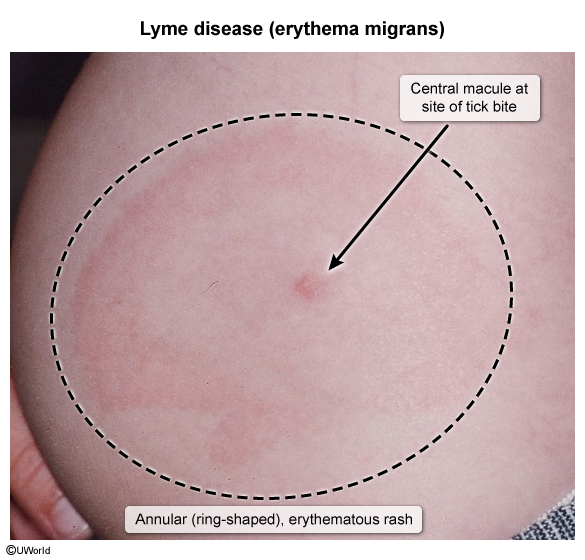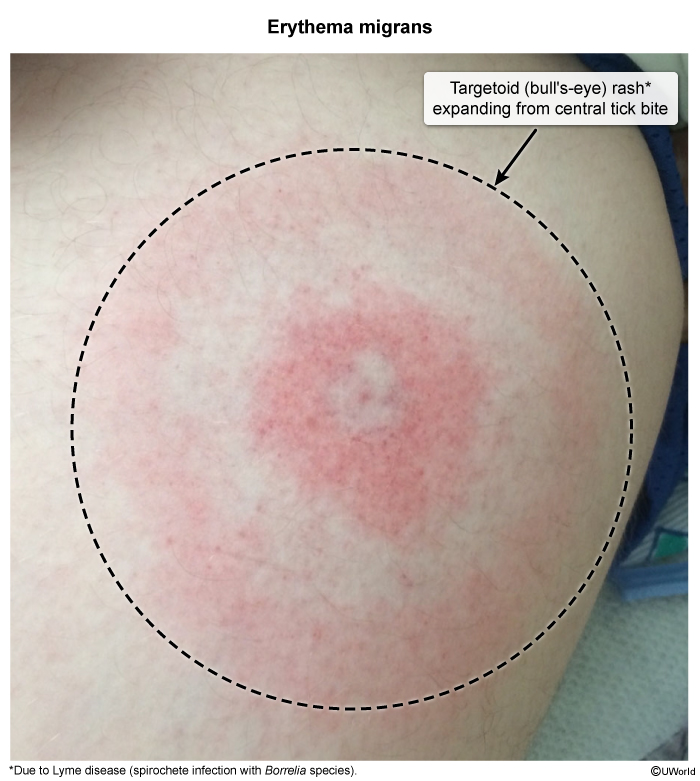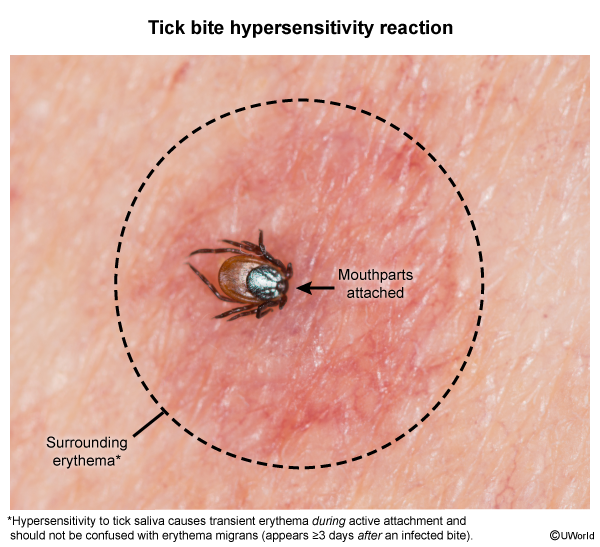Lyme Disease
Article Sections
Introduction
Lyme disease is caused by Borrelia burgdorferi (Image 1), a bacterial spirochete transmitted to humans by the bite of infected Ixodes ticks (Image 2). Infection primarily affects the skin, nervous system, heart, and joints, with clinical manifestations typically occurring in 3 phases: early localized, early disseminated, and late disease.
Epidemiology, vectors, and seasonality
Lyme disease was first recognized in Old Lyme, Connecticut, a small, rural town that typifies the geography of where most infections occur (ie, woodlands of the northern hemisphere). Lyme disease is endemic to the northeastern and midwestern United States (Figure 1), as well as forested regions in northern Europe and Asia.
The risk for Lyme disease is highest for individuals who reside in or travel to endemic areas and are exposed to ticks, which often occurs in the context of outdoor recreational or occupational activities (eg, hiking, camping, landscaping, forestry).
Continue Learning with UWorld
Get the full Lyme Disease article plus rich visuals, real-world cases, and in-depth insights from medical experts, all available through the UWorld Medical Library.
Figures
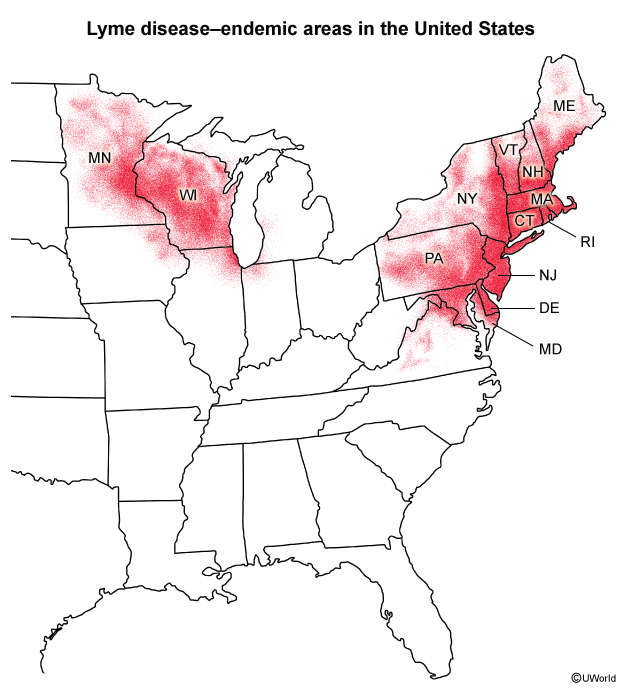
Images

